What is an AC contactor and why is it so important for your equipment?
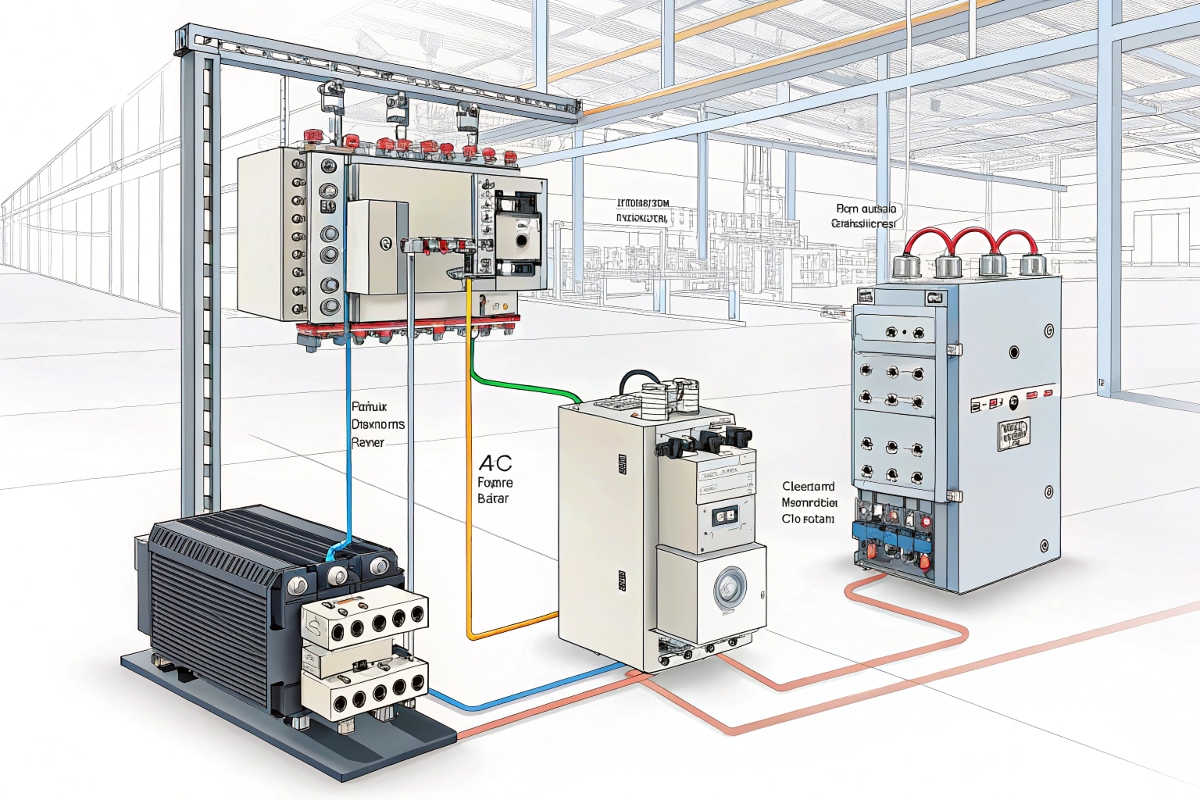
Are you tired of dealing with failing motors or flickering lights? An AC contactor is more than just a switch. It is the key to reliable control and protection.
An AC contactor is a heavy-duty, electrically operated switch designed to handle high-current loads. It's used to remotely turn power circuits on and off. Its main job is to safely manage the large inrush currents from devices like motors, protecting them from damage during startup.
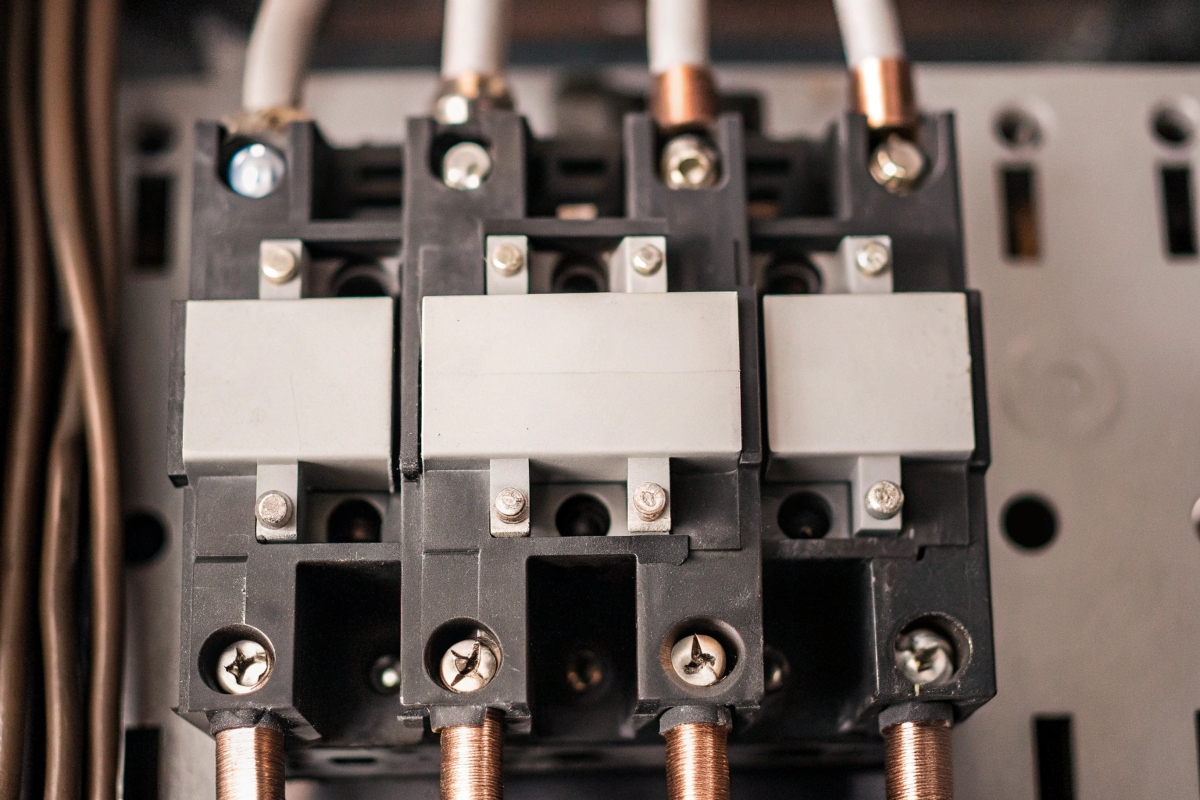
I’ve seen many projects face unnecessary costs and downtime. This often happens because the team sees a contactor as just another switch. But its role is much more critical. It acts as the guardian for your most expensive equipment. Understanding how it works is the first step to building more robust and reliable electrical systems. Let's dig into what makes these components so essential and how to choose the right one for your needs.
What is an AC contactor used for?
Need to safely control big motors, lights, or heaters? Worried about damaging expensive equipment? AC contactors are the industry standard for these exact heavy-duty jobs.
AC contactors are mainly used for controlling high-power loads like electric motors, large lighting systems, and heating elements. Their ability to handle high inrush currents makes them essential for starting motors in applications like HVAC systems, pumps, and industrial machinery, providing safe and reliable operation.

When you look at a contactor, you might just see a simple switching device. But its real value is in how it handles the most stressful moments in an electrical circuit, especially when starting a motor.
Precision Arc Management
When a motor or compressor starts, it draws a huge amount of current, which creates a powerful electrical arc1 inside the switch. A normal switch would be destroyed quickly. An AC contactor is built differently. It has special features like arc chutes and blowout geometry to safely control and extinguish this arc. The contacts are often made from a silver-tin oxide alloy. This material resists welding and pitting. In my experience, investing in a quality contactor with good arc management directly extends the life of expensive equipment like HVAC compressors. It’s a small upfront cost that prevents huge downstream failures and warranty claims.
A Gateway to Predictive Maintenance
A contactor can also tell you when it's getting old. As the internal mechanics wear out, the electrical signals change slightly. You can monitor the coil's pickup current or the time it takes to close. By tracking these simple signals, you can predict when a contactor is near the end of its life and replace it before it fails. This is a simple form of predictive maintenance2 that improves uptime for your customers and can even become a new service you offer.
What is the difference between an MCB and a contactor?
Are you confused about choosing between an MCB and a contactor? Using the wrong device can be inefficient and dangerous. They have very different jobs: one protects, the other controls.
A Miniature Circuit Breaker (MCB) is a safety device that automatically trips to protect a circuit from overcurrents or short circuits. A contactor is a switching device used to frequently turn a load on and off. In short, an MCB is for protection; a contactor is for control.
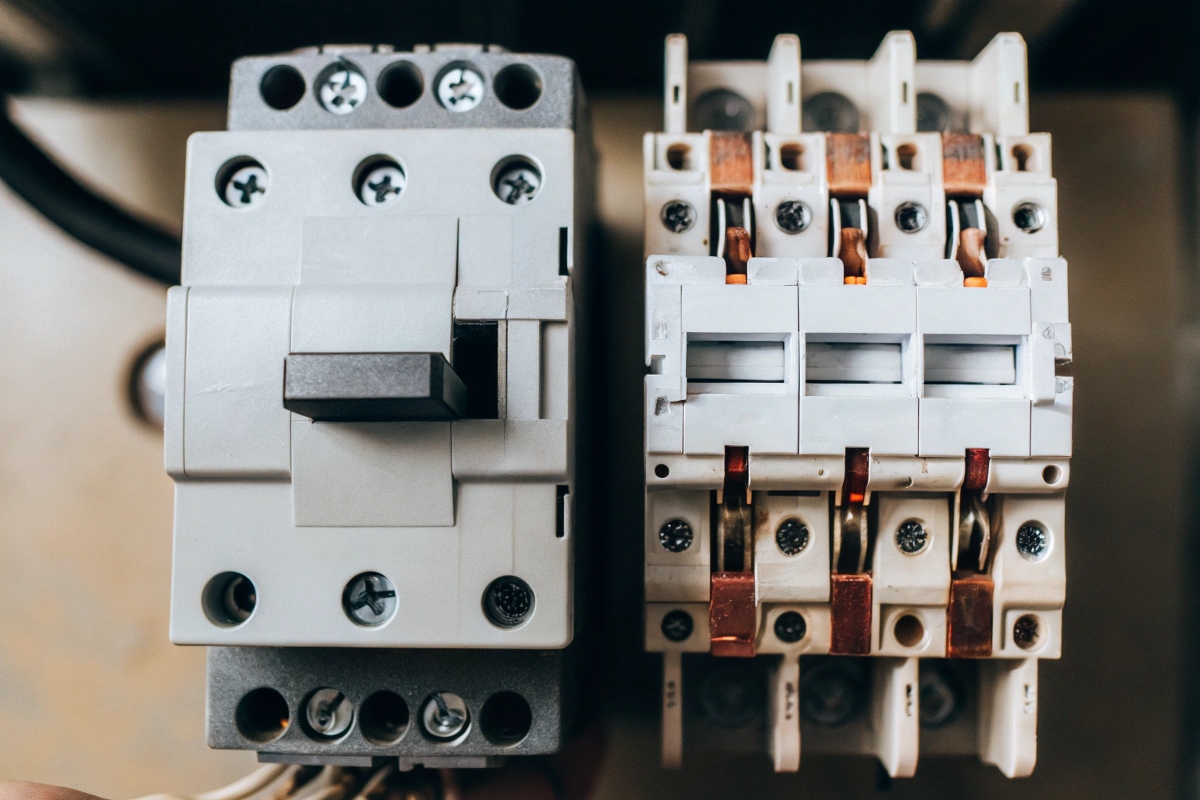
It's a common point of confusion, but the distinction is critical for a safe and functional system. I remember a new technician on my team asking why we need both. "If the MCB can turn the circuit off, why do we need a contactor?" he asked. It's a great question. The answer lies in their intended purpose and how they operate. An MCB is like an emergency brake, while a contactor is like the gas pedal. You need both to drive safely.
Function and Operation
An MCB’s only job is protection. It sits and waits for a fault, like an overload or a short circuit. When it detects one, it trips automatically to cut the power and prevent fires or equipment damage. You have to reset it manually. A contactor, on the other hand, is designed for active control. An electrical signal energizes its internal coil, which pulls the contacts closed to complete the circuit. It's built to do this thousands, or even millions, of times without wearing out.
A Simple Comparison
Here is a simple table to break it down:
| Feature | Miniature Circuit Breaker (MCB) | AC Contactor |
|---|---|---|
| Main Job | Protection | Control |
| Operation | Trips automatically on faults; manual reset | Switches on/off via an electrical signal |
| Use Case | Protects the entire wire/circuit | Controls a specific load (motor, heater) |
| Switching | Not designed for frequent switching | Designed for frequent, high-cycle switching |
You never choose one over the other. You use them together. The circuit is protected by an MCB, and within that protected circuit, a contactor turns the motor on and off.
What are the three main types of AC contactors?
Not all contactors are the same. Using the wrong type can cause system failure or even a fire. Understanding the main types ensures you choose the right one for the job.
The three main types are often categorized by what kind of load they can handle. These are called utilization categories. The most common are AC-1 for simple resistive loads, AC-3 for starting motors, and AC-4 for very heavy-duty motor applications like frequent starting and stopping.
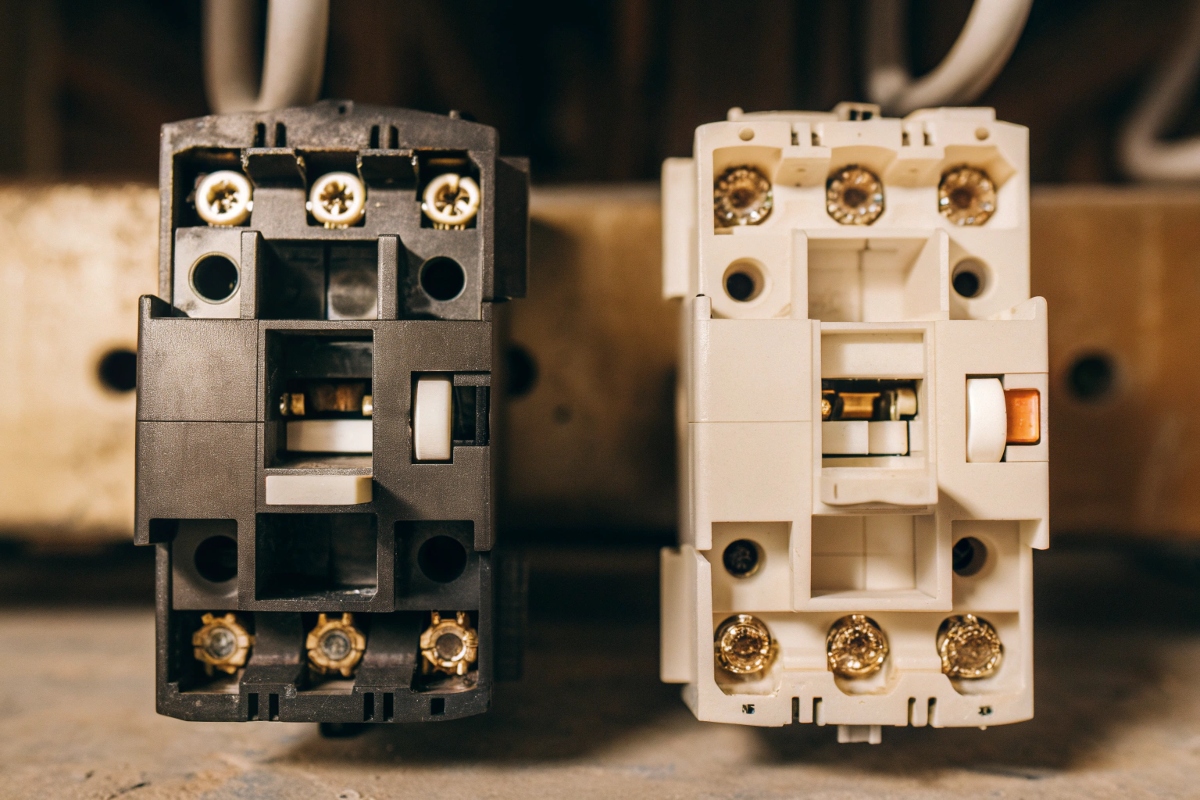
Choosing the right contactor type is about matching the device to the electrical load. A mismatch here is one of the most common reasons for premature failure I see in the field. The utilization category, which is printed on the contactor, tells you exactly what it was designed for. Getting this right ensures safety, helps with compliance inspections, and saves you from costly callbacks.
AC-1: For Heaters and Lighting
This is the simplest category. It's for resistive loads, which means things that don't have a big motor inside. Think of electric furnaces, resistance heaters, or large banks of lights. These loads have a steady current draw without a massive startup spike. AC-1 contactors are rated for the full current they will carry continuously.
AC-3: The Workhorse for Motors
This is the most common type you'll find in industrial settings. AC-3 contactors are designed specifically for starting and stopping standard squirrel-cage motors. They are built to handle the high inrush current that a motor draws when it first starts up. They can safely break the circuit while the motor is running. This makes them perfect for pumps, fans, compressors, and most standard machinery.
AC-4: For Extreme Duty Cycles
AC-4 is for the toughest jobs. This includes applications where a motor is frequently started, stopped, or reversed. This is often called "jogging" or "plugging." Think of cranes, elevators, or machine tools that make many small, quick movements. These actions are very hard on a contactor. An AC-4 rated contactor is built with even more robust materials to handle this extreme duty cycle without failing.
What is the difference between an AC and a DC contactor?
Thinking you can use an AC contactor for a DC circuit? This is a common and very costly mistake. Their internal designs are fundamentally different for a critical reason.
The main difference is in how they handle the electrical arc when the contacts open. DC current is constant and creates a very stubborn arc that is hard to put out. AC current naturally drops to zero many times per second, which helps extinguish the arc much more easily.
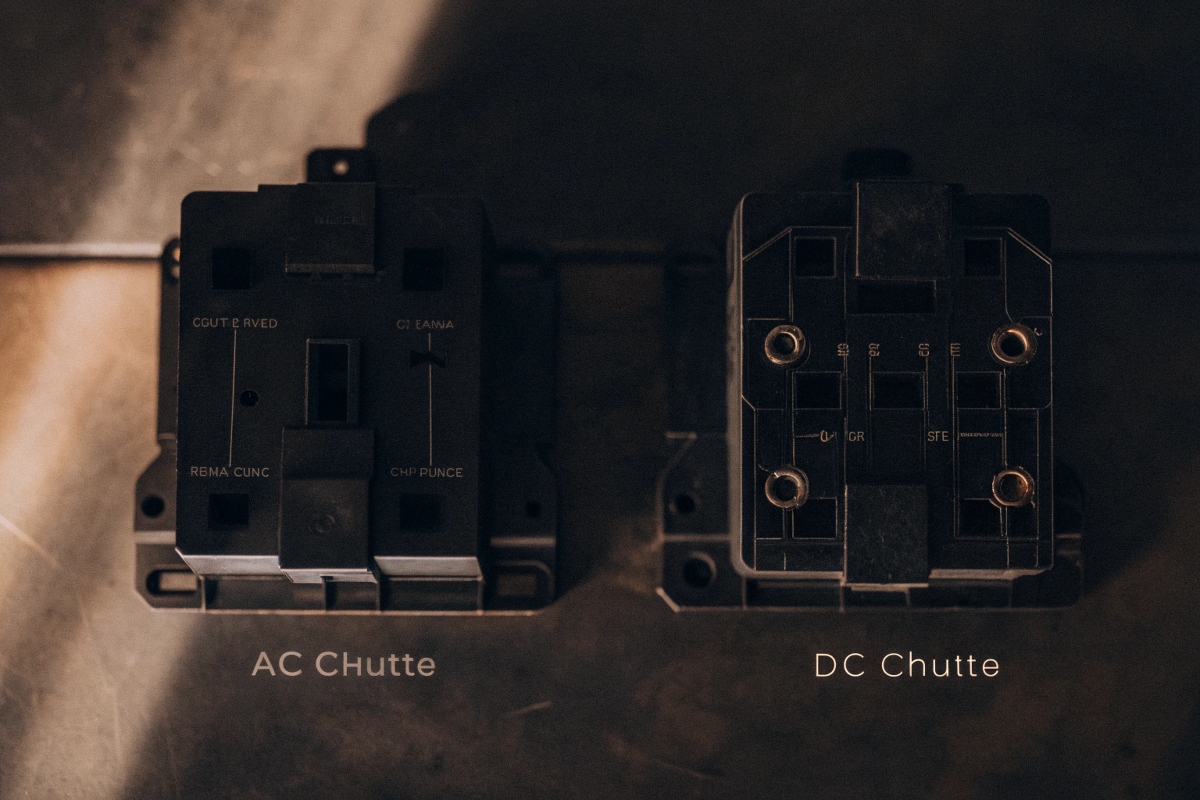
This difference in handling the arc is everything. I once visited a small workshop that was having trouble with their DC-powered machinery. They had used an AC contactor because it was cheaper and readily available. The contactor failed within a week because its contacts had welded shut. The arc simply refused to go out and melted the internal parts. It's a perfect example of why you must use the right component for the job.
The Challenge of the Arc
An electrical arc is like a small bolt of lightning that forms when the contacts pull apart. With AC power, the current wave passes through zero volts 100 or 120 times every second. This moment of zero current gives the arc a chance to extinguish naturally. Because of this, AC contactors can have a relatively simple and compact arc-quenching system. DC power is a completely different story. It’s like a constant, steady river of current that never stops. To break a DC arc, you need a much more aggressive system, often with magnetic blowout coils and larger arc chutes to physically stretch and cool the arc until it breaks.
Coil Design and Noise
The difference also extends to the coil that powers the contactor. An AC coil needs a special "shading ring3" embedded in the iron core. Without it, the coil would buzz and chatter loudly due to the alternating magnetic field. This is the source of the classic "contactor hum." DC coils don't need this, so they are inherently quieter. In fact, many modern, high-quality "AC contactors" now use a DC coil powered by a small, built-in rectifier. This makes them much quieter and more energy-efficient, as they use less power to stay closed. This reduces heat inside electrical panels4 and elevates the Pperceived quality of the final product.
Conclusion
An AC contactor is far more than a simple switch. It is a critical component for safe control, equipment protection5, and overall system efficiency. Choosing the right one saves money and ensures reliability.
-
Learn about electrical arcs and their implications in circuit design and safety. ↩
-
Find out how predictive maintenance can improve equipment reliability and reduce downtime. ↩
-
Find out how shading rings improve the performance of AC contactor coils. ↩
-
Learn about electrical panels and how they house critical components like contactors. ↩
-
Understand the importance of equipment protection in maintaining system reliability. ↩

